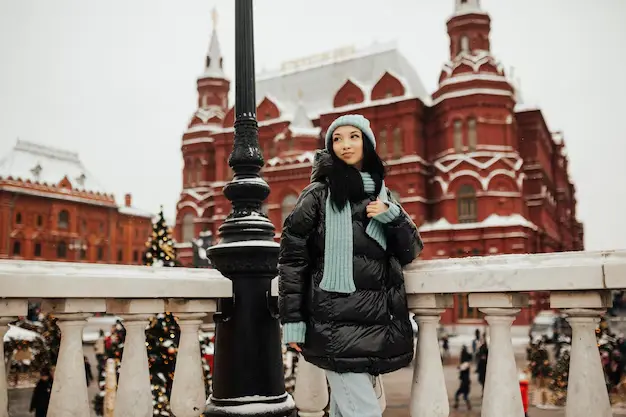Have you ever wondered what life feels like on the edge of Russia’s Far East where snow-clad boulevards meet spring blossoms, and where ordinary citizens once shook the entire nation with protests?
Welcome to Khabarovsk, Russian Federation a city that’s as visually enchanting as it is politically symbolic.
A Glimpse of Khabarovsk
Khabarovsk sits proudly along the banks of the Amur River, just twenty miles from the Chinese border. As one of the largest cities in the Russian Far East, it serves as the administrative center of Khabarovsk Krai. Yet for travelers arriving from Beijing, Tokyo, or Moscow, Khabarovsk feels like stepping into another world entirely a place where Siberian landscapes blend with European-style architecture and Far Eastern calm.
Visitors often describe the city as “beautifully isolated.” Its distance from Moscow more than 6,000 kilometers shapes both its charm and its independent spirit.
Flying into the Far East
Getting to Khabarovsk is a journey worth remembering. Many travelers connect through Beijing Capital International Airport, boarding an Aeroflot or S7 Airlines flight that crosses the northern edge of China before landing in this quiet yet bustling Russian city.
First-time visitors are often struck by the difference from the chaotic lines of Beijing’s airport to the orderly calm of Khabarovsk’s terminals.
Once you arrive, the crisp air hits first clean, cold, and full of pine scent in winter, or humid and sweet when spring begins to bloom.
Seasons of Contrast: From Snow to Blossoms
Locals often joke that Khabarovsk has two moods “snow globe” and “garden paradise.”
In winter, the city transforms into a landscape straight out of a fairy tale. Black-barked birch trees stand against white streets, and frozen parks create a soft silence that blankets the city. Roads glisten with packed snow, and the Amur River turns into a sheet of ice stretching toward the horizon.
But when spring arrives, everything changes overnight.
The snow melts into green. Silver birch, elder, and gingko trees burst into color. Petunias and salvias bloom in hanging baskets across the city’s boulevards, and locals gather in parks to celebrate the new season. It’s a transformation that feels almost magical a reminder that the Russian Far East, though remote, is alive and vibrant.
Where to Stay: The Olympic Hotel Experience
A favorite among foreign visitors is the Olympic Hotel, located near the heart of the city. Known for its comfortable rooms and friendly staff, it offers a surprisingly modern touch in this old frontier town.
Guests often describe the hotel’s restaurant as “funky” a mix of dim lights, avant-garde music, and good food. It’s the kind of place where you might enjoy seafood pasta while watching surreal music videos on a flat-screen TV. The atmosphere is both strange and wonderful, in that perfect “Khabarovsk” way.
Evenings at the Olympic feel intimate. English-speaking staff like Dasha, a young waitress eager to practice her English, make travelers feel welcome. After long flights and adventures through the Far East, the warmth of a local smile feels better than any five-star luxury.
Walking Through History
A simple afternoon walk through Khabarovsk can feel like stepping through centuries of Russian history.
You’ll find a tiny Baptist church tucked between apartment blocks, a reminder of the city’s small but resilient religious communities. You’ll pass Lenin Square, where locals once gathered to celebrate holidays and later, to protest injustice.
One of the best parts of visiting is simply exploring. Even reading Cyrillic street signs can become an adventure, especially for travelers who love decoding languages. And for those who came during winter, retracing their steps in spring brings a strange joy like seeing the city reborn.
Beyond Tourism: The City That Protested
Khabarovsk isn’t just known for its beauty. It also became a symbol of Russia’s regional defiance.
In July 2020, the quiet streets erupted in protest. When the city’s popular governor, Sergei Furgal, was arrested on old murder charges many believed were politically motivated, tens of thousands of residents took to the streets. They shouted slogans like “We are the power here!” rare words in modern Russia.
At its peak, up to 80,000 protesters filled Khabarovsk’s boulevards out of a total population of around 600,000.
They weren’t only defending Furgal. They were defending their right to choose leaders without Moscow’s interference.
President Vladimir Putin’s government replaced Furgal with Mikhail Degtyaryov, a politician from the same party but with deep ties to Moscow. To locals, it felt like an insult as if their votes didn’t matter.
The protests lasted for months, making them the longest-running demonstrations in modern Russian history outside Moscow. They revealed something powerful: the Far East was tired of being treated as a distant colony, rich in natural resources but poor in influence.
The Meaning of Oblastnichestvo
That independent streak has deep roots.
In the 19th century, settlers, explorers, and even exiled dissidents developed a belief called “oblastnichestvo” the idea that the Russian Far East had its own identity, separate from Moscow’s.
The word itself comes from “oblast,” meaning “region,” and represents a sense of regional pride and autonomy.
For modern Khabarovsk residents, that spirit lives on. While no one expects full independence, many believe their region should have more say over its resources and governance especially since so much of Russia’s oil, gas, and timber comes from the East.
A City Between Two Worlds
Khabarovsk is strategically positioned between Europe and Asia, only a short flight from China, Japan, or South Korea. Its location has always given it a unique character Russian in culture, yet Asian in rhythm.
The streets showcase Soviet-era monuments beside modern cafes. Locals wear European-style coats in winter, yet markets sell Chinese snacks and Korean cosmetics. It’s this cultural mix that makes the Khabarovsk Russian Federation experience so fascinating for American travelers it’s not the Russia of Red Square or Saint Petersburg, but something far more layered and human.
What Khabarovsk Teaches About Russia Today
To understand modern Russia, you have to look beyond Moscow. Khabarovsk shows a different reality one where ordinary people balance love for their homeland with frustration toward central power.
After the Ukraine invasion in 2022, many of those same protesters fell silent, silenced by harsh new laws against dissent. Yet, beneath the quiet, the memory of 2020 remains. Analysts believe that when Russia’s future is rewritten, the Khabarovsk movement will be remembered as a sign that regional voices can and did rise.
Why Americans Should Care
For U.S. readers and travelers, Khabarovsk offers both beauty and insight. It’s a reminder that Russia isn’t one uniform story it’s a collection of regions, cultures, and people, each with their own struggles and pride.
Whether you’re a traveler exploring the Amur River, a student studying Russian regional politics, or simply a curious mind drawn to distant corners of the world, Khabarovsk stands as a living lesson in resilience.
It shows how far a city can be from power and yet, how close it can come to shaping it.
Final Thoughts
Khabarovsk, Russian Federation, is more than a place it’s a reflection of contrasts:
snow and sun, silence and protest, distance and connection.
From the cozy rooms of the Olympic Hotel to the chants that once filled Lenin Square, Khabarovsk captures what it means to be both Russian and free-spirited.
If you ever get the chance, walk its streets.
Listen to the languages, the laughter, the echoes of defiance carried by the wind off the Amur.
Because somewhere between its frozen winters and bright springs lies the story of a city that dared to be heard.

